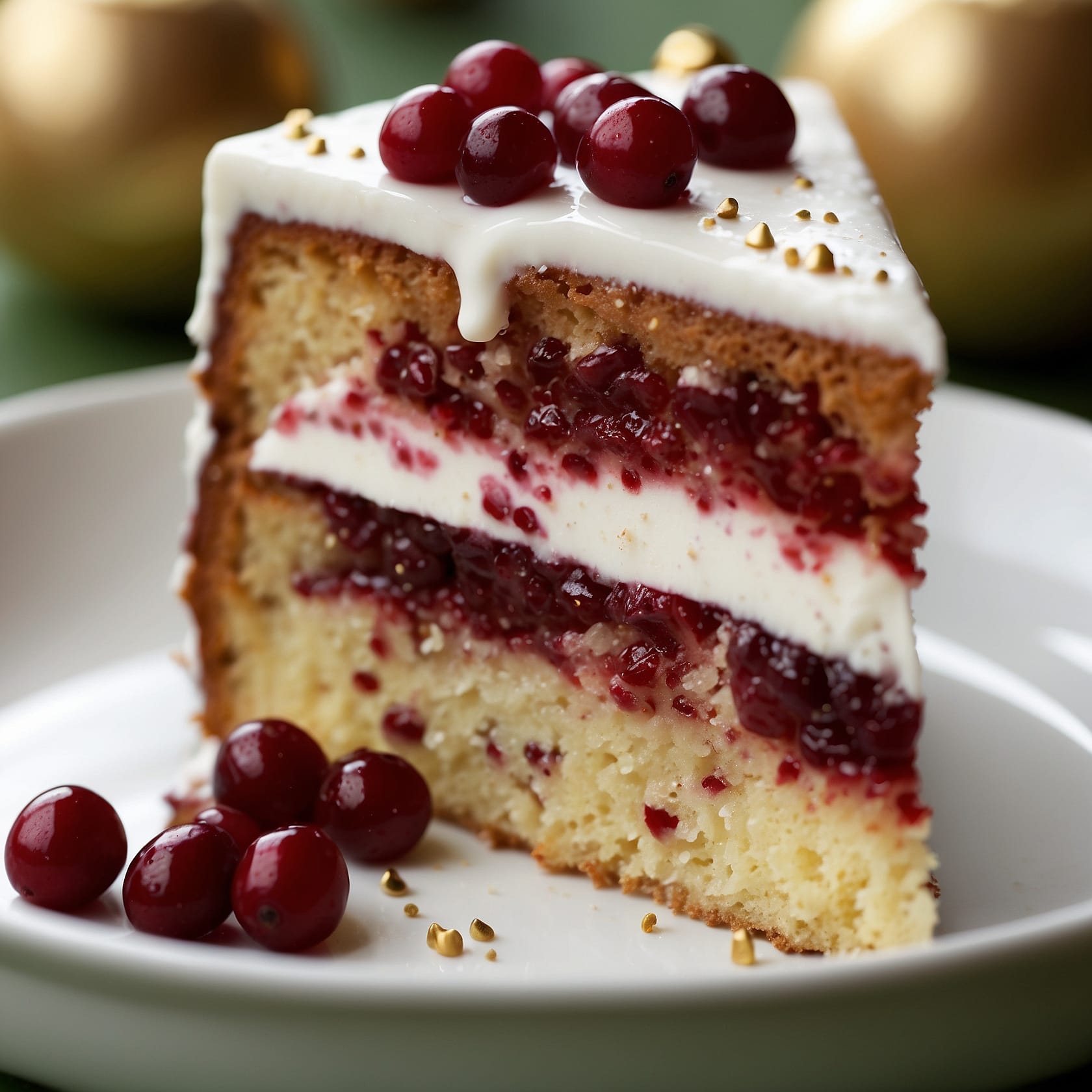
Table of Contents
Introduction
- The Ultimate BBQ ribs: Ribs have long been a favorite at BBQs, picnics, and family gatherings. Their smoky, tender, and flavorful meat is the star of any feast.
- Why Ribs Are a Crowd-Pleaser: Ribs are more than just food—they are a bonding experience, often shared among friends and family, bringing everyone together over a juicy, finger-licking meal.
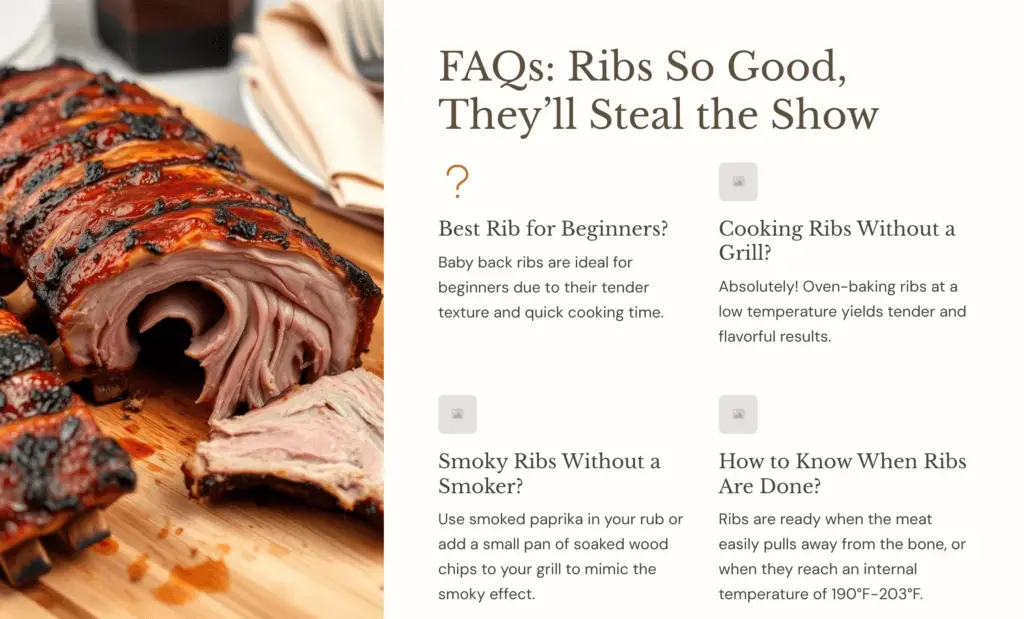
Ingredients
For the Ribs:
- 2 racks of baby back ribs (or spare ribs, depending on your preference)
- Salt and pepper to taste
- 2 tbsp olive oil
For the Dry Rub:
- 1/4 cup brown sugar
- 2 tbsp paprika
- 1 tbsp black pepper
- 1 tbsp salt
- 1 tbsp chili powder
- 1 tbsp garlic powder
- 1 tbsp onion powder
- 1 tsp ground cumin
- 1 tsp mustard powder
- 1/2 tsp cayenne pepper (optional for heat)
For the BBQ Sauce:
- 1 cup ketchup
- 1/4 cup apple cider vinegar
- 1/4 cup brown sugar
- 2 tbsp Worcestershire sauce
- 1 tbsp mustard
- 1 tbsp honey
- 1 tbsp lemon juice
- 1/2 tsp smoked paprika
- Salt and pepper to taste
Instructions
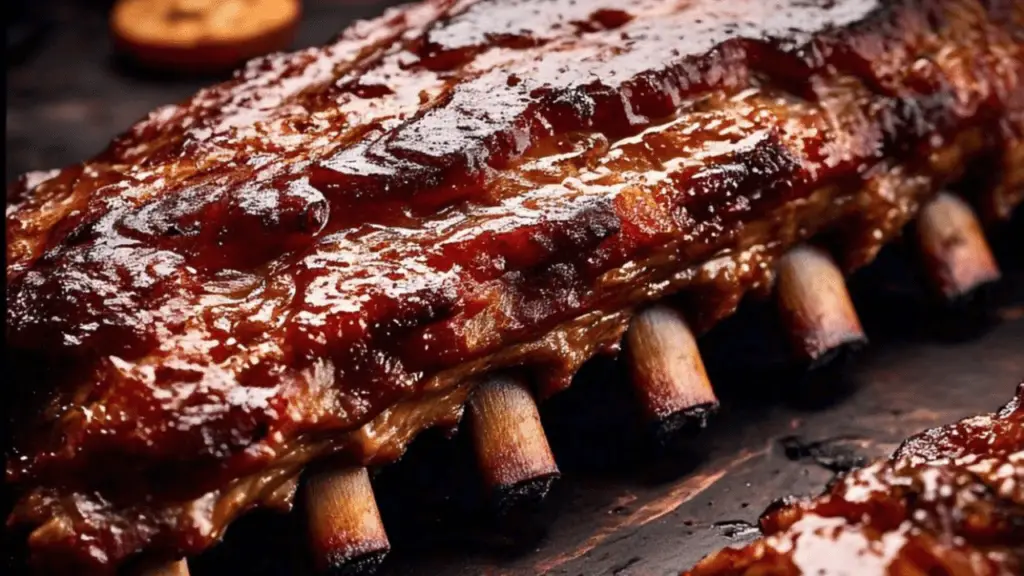
Step 1: Prep the Ribs
- Remove the Membrane: Start by removing the silver skin (the membrane) from the back of the ribs. This will allow the ribs to become more tender while cooking and help the seasoning penetrate the meat.
- Season the Ribs: Rub the ribs with a thin layer of olive oil, then season generously with salt and pepper.
Step 2: Apply the Dry Rub
- Prepare the Dry Rub: In a small bowl, mix together all of the dry rub ingredients.
- Coat the Ribs: Sprinkle the dry rub evenly over both sides of the ribs, pressing it in gently with your hands. Let the ribs rest for at least 30 minutes to absorb the flavors.
Step 3: Prepare the BBQ Sauce
- Combine Sauce Ingredients: In a saucepan, combine all BBQ sauce ingredients over medium heat. Stir occasionally until the sugar is dissolved and the sauce is well-combined.
- Simmer: Allow the sauce to simmer for about 15-20 minutes until it thickens. Adjust seasoning with salt and pepper to taste. Set aside.
Step 4: Cook the Ribs (Low and Slow)
- Grill Method:
- Preheat the grill to a medium-low heat (around 250°F).
- Place the ribs on the grill over indirect heat (away from direct flame). Cover the grill and cook for about 2.5 to 3 hours, flipping occasionally, until the meat is tender and the ribs pull away from the bone easily.
- Oven Method:
- Preheat the oven to 275°F (135°C).
- Place the ribs on a baking sheet lined with aluminum foil and cover with foil.
- Bake for 2.5 to 3 hours, until the ribs are tender. For the last 30 minutes, uncover the ribs to allow them to brown.
Step 5: Glaze the Ribs
- Brush with BBQ Sauce: During the last 15 minutes of cooking, brush a generous layer of your homemade BBQ sauce over the ribs.
- Caramelize the Sauce: Continue cooking with the sauce on top, allowing it to caramelize and form a sticky, flavorful coating.
Step 6: Rest and Serve
- Rest the Ribs: Once the ribs are cooked to perfection, let them rest for 5-10 minutes before slicing.
- Slice and Serve: Slice the ribs between the bones and serve with extra BBQ sauce on the side, if desired.
The Magic Behind Perfect Ribs
Tender Meat
The secret to achieving perfectly tender ribs is all about time, patience, and the right technique. Tender meat that effortlessly falls off the bone with just a slight touch is the hallmark of great ribs. This is achieved through slow cooking, which allows the collagen in the meat to break down and turn into gelatin, resulting in a tender and juicy texture. Additionally, marinating the ribs in a flavorful rub or brine before cooking can enhance the meat’s moisture and tenderness. Choosing the right cut of meat, such as baby back ribs for their tenderness or spare ribs for their rich meat, is equally important. The combination of these factors ensures that the ribs are melt-in-your-mouth perfection.
Flavorful Rubs and Sauces
A great rib is more than just perfectly cooked meat—it’s about the flavors that coat and infuse it. The right balance of dry rubs and BBQ sauces can elevate ribs to the next level. Dry rubs, which often consist of spices like paprika, garlic powder, onion powder, brown sugar, and salt, create a flavorful crust that forms during cooking, adding texture and complexity. BBQ sauces, on the other hand, are the finishing touch, creating a sticky, sweet, tangy layer that enhances the overall flavor. The key is finding the right balance between heat, sweetness, and acidity. A classic blend might include smoky flavors from paprika, a bit of heat from cayenne or chili powder, and a touch of sweetness from brown sugar or honey. Layering these flavors ensures that every bite of the rib is an explosion of taste.
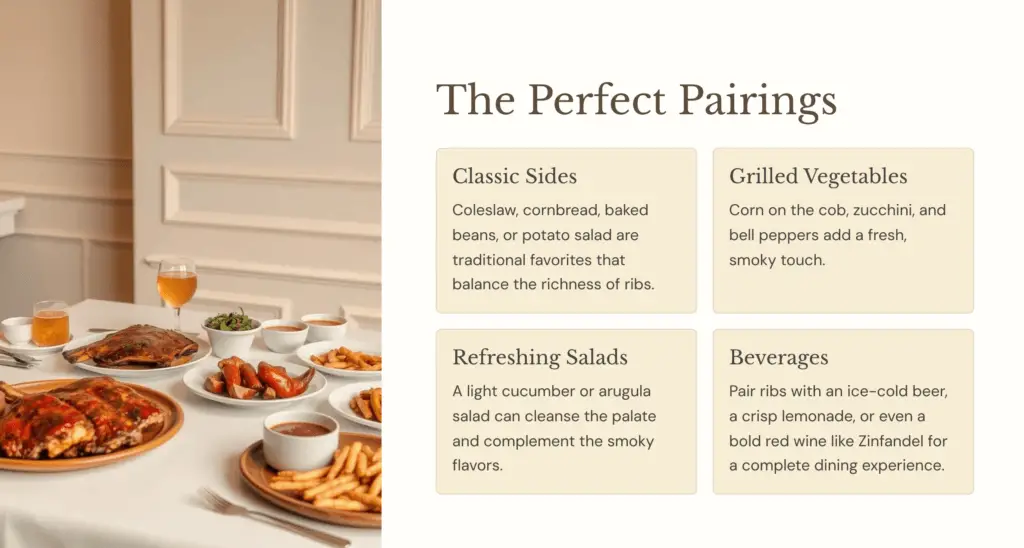
Grill vs. Oven
When it comes to cooking ribs, there are two main methods: grilling and oven-roasting. Each method produces a different texture and flavor profile, and understanding the difference will help you decide which one is best for your ribs.
- Grilling: Grilling ribs is ideal for those who enjoy a smoky, charred flavor. The heat from the grill cooks the ribs over indirect heat, infusing them with that signature smoky flavor. Grilling also allows for crispy edges and a delicious caramelized crust, especially when you brush the ribs with BBQ sauce in the final stages of cooking. However, grilling requires constant attention to avoid burning the meat, as well as managing the temperature to cook the ribs low and slow.
- Oven-Roasting: Oven-roasting offers a more hands-off approach, with the benefit of even heat distribution. Ribs cooked in the oven tend to be more tender and juicy since they are essentially braised in their own fat and juices. Oven-roasting is a more controlled cooking method, ensuring that the meat cooks at a consistent temperature. For those who don’t have access to a grill, the oven can be a great option for achieving that fall-off-the-bone tenderness. Plus, oven-roasting allows for easier glazing of the ribs with BBQ sauce in the final stages to create that sticky, flavorful finish.
Ultimately, the choice between grilling and oven-roasting comes down to personal preference. If you’re after that smoky flavor and crispy texture, grilling is the way to go. If you prefer tender, juicy ribs that are low-maintenance and perfectly cooked, the oven is your best bet. Regardless of the method, the goal is the same: creating ribs that are packed with flavor, tender, and irresistible.
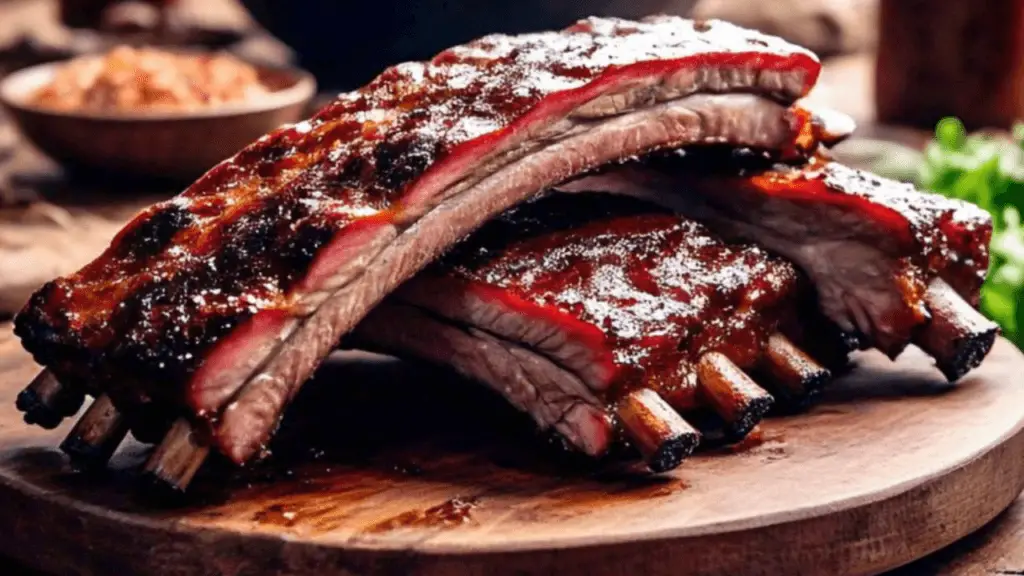
The Best Cuts of Ribs
Baby Back Ribs
Baby back ribs are among the most popular cuts of ribs, especially for those who prefer a more delicate bite. These ribs are smaller and leaner than other types, making them ideal for individuals who like a tender, melt-in-your-mouth experience. The meat is tightly attached to the top of the ribcage and is usually served with a delicate layer of fat. Baby back ribs cook quickly and are perfect for grilling or oven-roasting. Their tender texture and mild flavor make them an excellent choice for those new to ribs or for those who prefer a subtle taste profile. A light coating of seasoning or a classic BBQ glaze works perfectly with baby back ribs.
Spare Ribs
Spare ribs are larger, meatier, and have more fat than baby back ribs, which makes them a great choice for people who enjoy a richer, more indulgent flavor. The extra fat helps keep the meat moist during cooking, giving spare ribs their signature juicy texture. These ribs are typically flatter and wider, making them perfect for slow cooking methods like roasting or smoking. The meat is also more flavorful due to the higher fat content, which infuses the meat with taste as it cooks. Spare ribs can be enjoyed as is or with a heavier rub or sauce for added richness.
St. Louis Ribs
St. Louis ribs are a trimmed version of spare ribs, meaning they have been cut to remove the rib tips, leaving a uniform rack with a good balance of meat and fat. This cut offers the best of both worlds: the richness of spare ribs with a cleaner presentation. St. Louis ribs have a square, neat shape, making them easy to handle and ideal for grilling. They also cook evenly, making them a favorite for BBQ enthusiasts and professional chefs alike. Their flavor is robust, thanks to the right amount of fat, and the texture is tender, with a nice balance between the meat and crispy outer edges. This cut is a popular choice at BBQ joints and is often used for competition-style rib cooking.
Choosing the right cut of ribs depends on your preference for tenderness, flavor, and cooking style. Whether you opt for the leaner, delicate baby back ribs, the rich and juicy spare ribs, or the balanced and well-trimmed St. Louis ribs, each cut offers a unique experience that will elevate your rib game.
Cooking Techniques for Ribs
Low and Slow
The key to achieving tender, fall-off-the-bone ribs is cooking them at a low temperature for an extended period of time. This slow-cooking method allows the collagen in the meat to break down, resulting in incredibly tender and juicy ribs. Two popular techniques for slow cooking ribs are smoking and baking:
- Smoking: Smoking ribs over low heat (usually around 225°F) for several hours infuses the meat with a rich, smoky flavor that you can’t replicate with other methods. The smoke from wood chips or chunks penetrates the ribs, adding a deep, savory taste. Smoking also gives the meat a beautiful pink ring, signifying it’s been slow-cooked to perfection.
- Baking: Baking ribs at a low temperature (around 275°F) in the oven is another excellent way to slow cook them. This method is often faster than smoking but still results in tender, flavorful ribs. Wrap the ribs in foil to retain moisture, and bake them for 2-3 hours, depending on the thickness of the meat. This method ensures the ribs cook evenly and stay juicy.

Grilling Perfection
Grilling is one of the best ways to get that smoky, charred flavor that ribs are famous for. The key to grilling ribs perfectly is using the indirect grilling method. This technique involves cooking the ribs on the cooler side of the grill, away from direct heat, to prevent burning while still achieving that classic grilled flavor. Here’s how you can master indirect grilling:
- Preheat your grill to a medium-low temperature, ensuring that one side of the grill is hot and the other is cool.
- Place the ribs on the cooler side, bone-side down, and close the lid. Allow the ribs to cook slowly, turning occasionally for even cooking.
- Maintain the grill temperature at around 225°F-250°F to ensure the ribs cook slowly and evenly without drying out.
This technique allows the ribs to cook for hours, gradually taking on that delicious smoky flavor, while the heat gently renders the fat, creating a tender texture.
Finishing Touches
The final step in cooking ribs is adding a glaze of BBQ sauce. This step gives ribs their signature sticky, caramelized finish that everyone loves. Here’s how to get the perfect glaze:
- During the last 20-30 minutes of cooking, brush your favorite BBQ sauce on the ribs, ensuring an even coating.
- If you’re grilling, this is the perfect time to increase the heat slightly for a few minutes to get that caramelized, crispy exterior. Be sure to watch closely to prevent burning.
- If baking, brush the sauce on during the final 10-15 minutes of cooking. This allows the sauce to set and thicken without burning.
This finishing touch not only adds flavor but also creates that beautiful glossy, slightly charred layer on the surface of the ribs, making them irresistible.
Mastering these techniques—low and slow, grilling perfection, and the right finishing touches—ensures your ribs will be bursting with flavor and texture that are sure to impress any guest.
Ribs Around the World
BBQ Culture
Ribs are a staple in BBQ culture, with each region in the United States offering its own unique twist on this beloved dish. Let’s explore the different styles of ribs from around the country:
- Southern BBQ (Memphis Style): Known for their dry rubs, Memphis ribs are seasoned with a mixture of spices like paprika, garlic, and cayenne, giving them a zesty kick. The ribs are cooked low and slow, allowing the spices to penetrate deeply into the meat, creating a flavor-packed bite. The ribs are often served with a tangy vinegar-based sauce on the side, allowing you to customize the flavor.
- Kansas City Style: Kansas City is known for its sweet and smoky sauce, which is typically tomato-based with molasses, brown sugar, and vinegar. The ribs in this region are often slathered in sauce during the cooking process, creating a sticky, caramelized coating that gives a perfect balance of sweet, tangy, and smoky flavors.
- Texas Style: Texas ribs, particularly those from Central Texas, focus on the meat itself, using minimal seasoning or rubs to allow the flavor of the meat to shine. The ribs are often cooked over live oak wood, imparting a rich smoky flavor. In some parts of Texas, particularly around the BBQ joints in the Hill Country, the ribs are often served without sauce, letting the meat’s natural flavors take center stage.
International Takes
While ribs are quintessentially American, many countries around the world have developed their own distinctive takes on this popular dish, infusing unique regional flavors.
- Asian-Style Ribs: In countries like China, Japan, and Korea, ribs are marinated in soy sauce, hoisin sauce, and other savory, sweet, and spicy ingredients. Korean-style galbi ribs are marinated in a mixture of soy sauce, sugar, garlic, and sesame oil, then grilled to perfection. The sweet and salty marinade gives the ribs a glossy finish, with a tender and juicy interior. Chinese-style ribs are often cooked with five-spice powder, adding an aromatic flavor profile that complements the rich pork.
- Brazilian-Style Ribs: In Brazil, ribs are often cooked over an open flame as part of the country’s famous churrasco barbecue. The meat is typically seasoned with a chimichurri marinade, which features a blend of herbs, garlic, olive oil, vinegar, and spices. The tangy and aromatic flavors from the chimichurri enhance the smoky flavor of the meat, creating a vibrant and flavorful experience. Brazilians also love to serve their ribs with fresh sides like rice, beans, and grilled vegetables.
- Middle Eastern Ribs: In the Middle East, ribs are often marinated with yogurt, garlic, and a blend of spices like cumin, coriander, and cinnamon. This tenderizing marinade not only infuses the meat with aromatic flavors but also gives it a unique richness. The ribs are often cooked over an open flame or in a slow oven to achieve a perfect balance of tenderness and flavor.
The Global Love for Ribs
Ribs have transcended borders, with cultures worldwide finding their own way to prepare and enjoy this beloved dish. Whether you’re enjoying American-style BBQ ribs or Asian-inspired glazed ribs, the universal appeal of this hearty, flavorful meal is undeniable. Each culture brings something special to the table, from different marinades and rubs to unique cooking techniques, ensuring that ribs continue to delight taste buds around the world.
The Perfect Pairings
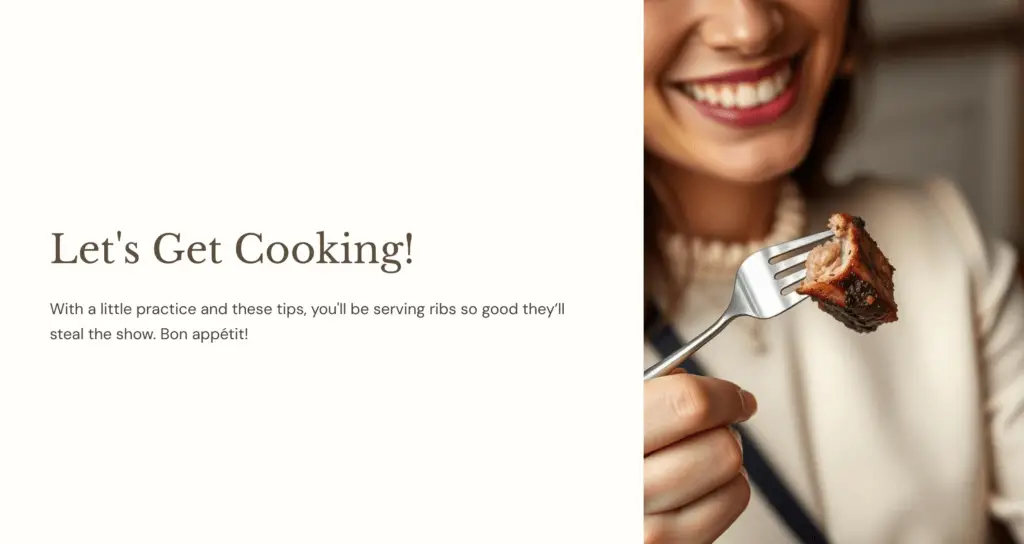
Sides to Serve
When it comes to serving ribs, choosing the right sides is essential for creating a balanced and satisfying meal. Here are some classic sides that perfectly complement the smoky, flavorful richness of ribs:
- Coleslaw: A fresh, crunchy coleslaw is a popular side dish for ribs. Its creamy, tangy dressing offers a refreshing contrast to the richness of the meat. The crisp texture adds a nice contrast to the tenderness of the ribs, balancing out the flavors.
- Baked Beans: Sweet and savory baked beans are another classic rib companion. The rich, slightly sweet flavor of the beans pairs beautifully with the smoky ribs, creating a comforting, hearty meal.
- Cornbread: Soft, slightly sweet cornbread is the perfect way to mop up any leftover BBQ sauce on your plate. Its slightly crumbly texture complements the juicy ribs, and it adds an extra layer of flavor to the meal.
- Grilled Vegetables: For a lighter and healthier option, serve your ribs with a side of grilled vegetables. Vegetables like bell peppers, zucchini, and asparagus are lightly seasoned and grilled to perfection, offering a smoky flavor that complements the ribs without overpowering them.
Drinks that Complement Ribs
The right drink can elevate your ribs experience, whether you’re indulging in a BBQ feast or enjoying a more casual meal. Here are some drink options to consider:
- Cold Beer: A cold, crisp beer is a classic choice to pair with ribs. A lager or pale ale complements the smoky, savory flavors of the meat without overwhelming the taste. The carbonation of the beer helps cleanse the palate between bites.
- Iced Tea: For a non-alcoholic option, iced tea is a refreshing drink that pairs wonderfully with ribs. The slight bitterness of unsweetened iced tea cuts through the richness of the meat, while a hint of lemon can add a touch of brightness.
- Glass of Wine: If you prefer wine, red wines like Zinfandel or Malbec are great choices to pair with ribs. These wines have enough body and fruitiness to match the bold flavors of the ribs, making them a perfect match for BBQ dishes.
Desserts to Finish
No meal is complete without a sweet finish, and after enjoying a smoky, savory rib feast, these desserts offer the perfect ending:
- Pie: Classic fruit pies like apple pie or pecan pie are always a hit after a BBQ meal. The rich, sweet filling and flaky crust provide a satisfying contrast to the smoky flavors of the ribs.
- Brownies: A batch of warm, fudgy brownies is a simple yet indulgent dessert. The dense, chocolatey flavor pairs wonderfully with the savory rib meal, offering a sweet, rich finish to the meal.
- Fruit Salad: For a lighter, refreshing end to the meal, a chilled fruit salad can be a great option. Fresh, seasonal fruits like watermelon, berries, and citrus fruits offer a burst of sweetness and juiciness, making it the perfect palate cleanser after a hearty rib meal.
By pairing your ribs with the right sides, drinks, and desserts, you can create a well-rounded meal that delights every aspect of your taste buds and provides a memorable dining experience.
Conclusion
- Steal the Show at Your Next BBQ: With the right preparation, techniques, and flavors, your ribs will be the undeniable highlight of any gathering. The combination of tender meat, smoky flavors, and the perfect balance of rubs and sauces will leave everyone eagerly asking for seconds and reminiscing about the amazing meal long after it’s over.
- Encouragement to Try: Whether you’re a seasoned cook or just starting your culinary journey, making ribs at home is an incredibly rewarding experience. The process may require some patience, but the results are worth every bit of effort. Grab your favorite rubs and sauces, fire up the grill or oven, and get ready to create a batch of ribs so good, they’ll steal the show at your next BBQ!
For more amazing recipes, be sure to check out our other sections to explore a variety of ideas that will enrich your cooking experience. Each section offers its own unique flavors to ensure a delightful culinary journey:
- Easy and Quick Recipes: A collection of dishes that guarantee delicious meals with minimal effort and time.
- Healthy Recipes: Discover healthy and delicious options that fit your lifestyle.
- Desserts: A diverse selection of sweets that will add a special touch of sweetness to your table.
- Lunch Recipes: Tasty lunch ideas that you can easily prepare to delight your family.
- Dinner Recipes: Delicious and easy-to-make recipes that will make your dinner a memorable occasion.
FAQs: Ribs So Good, They’ll Steal the Show
- What’s the secret to tender ribs?
- The secret to tender ribs is slow cooking at low temperatures. Whether you’re using a smoker, grill, or oven, the key is to give the ribs time to cook, allowing the meat to become tender and fall off the bone. Marinating the ribs and using a rub also enhances flavor and tenderness.
- What are the best types of ribs to use?
- The best types of ribs depend on your preference:
- Baby back ribs: Tender and lean, perfect for a delicate bite.
- Spare ribs: Larger, meatier, and fattier, offering a rich flavor.
- St. Louis-style ribs: A trimmed version of spare ribs, balanced in meat and fat.
- The best types of ribs depend on your preference:
- Should I cook ribs in the oven or on the grill?
- Both methods can produce amazing ribs, but each offers a different experience:
- Oven: Ideal for slow cooking at low temperatures, producing tender, fall-off-the-bone ribs.
- Grill: Adds a smoky flavor and a crispy exterior, especially when using indirect grilling.
- Both methods can produce amazing ribs, but each offers a different experience:
- What is the best way to glaze ribs with BBQ sauce?
- For the perfect glaze, apply BBQ sauce during the last 10-15 minutes of cooking. This allows the sauce to caramelize and form a sticky, flavorful layer on the ribs. Avoid applying the sauce too early, as it can burn during long cooking times.
- What are some great sides to serve with ribs?
- Classic sides include coleslaw, baked beans, cornbread, and grilled vegetables. These sides balance the richness of the ribs and enhance the overall BBQ experience.
- How do I store leftover ribs?
- Store leftover ribs in an airtight container in the refrigerator for up to 3-4 days. For longer storage, wrap them tightly in foil and freeze. Reheat by gently warming them in the oven or on the grill to maintain their tenderness.
- Can I use different spices for ribs?
- Absolutely! Feel free to experiment with various dry rubs and marinades. For example, add paprika, garlic powder, cumin, or chili powder for extra flavor. You can also try different BBQ sauces to match your taste preferences.
- How do I know when my ribs are fully cooked?
- Ribs are fully cooked when the meat is tender and begins to pull away from the bone. You can check for doneness by using a meat thermometer (the internal temperature should be around 190°F for tender ribs) or by testing the ribs’ flexibility; they should bend easily without breaking.



